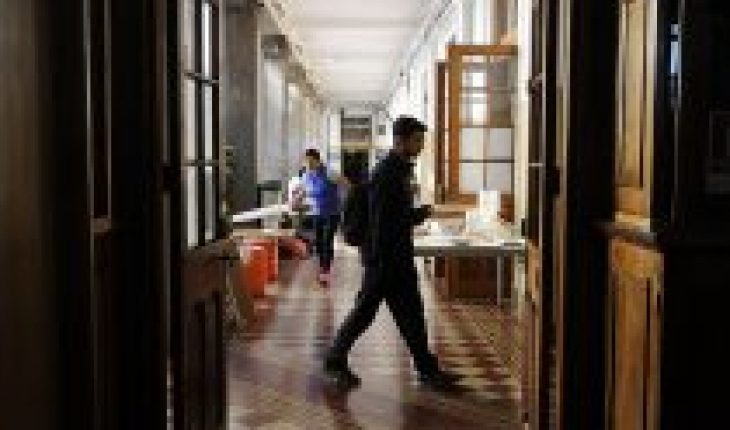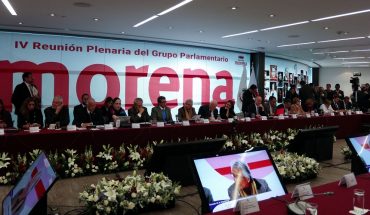
According to the Education at Glance report of 2019, Chile is the OECD country that spends the most on higher education. However, despite the above, today the system faces a serious financial crisis and some educational institutions are on the brink of bankruptcy, leaving in uncertainty thousands of students who do not know whether in the near future the educational precincts will be able to give them conditions to continue their training. In this context, it is necessary to recover the old questions of the movement for education, in order to make a basic diagnosis of the current crisis. In particular, is it possible that, having so much resources invested in this system, the problem is how these resources are invested, managed and obtained? and, considering the above, can solutions be found within the same financing model to the current economic crisis, or will it be necessary to build new funding pillars, ending the education market?
In Chile, unlike the OECD average, the state contributes only 32% of total expenditure on higher education, implying that the financing of educational institutions is entirely dependent on the resources from the payment of tuition and tariffs, which has been greatly diminished this year, regarding the effect of the economic crisis on the family economy. On the other hand, from the dictatorship onwards, the financing structure of the higher education system has shifted from the preferential and direct financing of the State to its institutions (financing to supply), towards the transfer of resources from the state to a multiplicity of higher education institutions (IES), the vast majority deprived, mainly as a result of the policy of free , State-guaranteed credit (CAE) and Solidarity University Credit Fund (FSCU) (demand financing).
Source: Grouping of Regional Universities of Chile
This combination has been fatal, as it has led to the weakening of public institutions, leaving them with few tools so that in this context of crisis they can deliver substantive solutions to students who are part of the higher education system. The pandemic, in this regard, has revealed that this system, by sustaining the economic effort of families and competition between institutions for the achievement of resources, reduces the capacity of public schools and therefore nullifies the possibility of guaranteeing the right to education.
The task is, then, to overcome the current situation of institutional crisis while alleviating the situation of students, but incorporating this scenario as an opportunity to advance in the improvement of a funding structure that has meant indebtedness for families, enrichment of educational enterprises, abandonment of the state with respect to their own institutions and , consequently, a failure to grant the right to education.
Government initiatives have pointed in the opposite direction, promoting, for example, the use of FSCU surpluses delivered to CRUCh universities as a common fund that would serve to provide loans to other institutions, mainly those not affiliated with free, i.e. mostly private institutions and subject to their own operating rules. Another initiative has been to advance the consolidation of a form of financing where free living with a unified and strengthened credit system (CAE 2.0), further reducing the relative weight of basal contributions to state institutions and benefiting business consortia in education, through the indebtedness and delivery of resources via “voucher” per student. On the other hand, since the opposition, it has been proposed to suspend the collection of tariffs and the payment of CAE fees as a measure to help solve the family economy, which undoubtedly goes in the right direction, but ends up being only a partial solution since it further defunds the institutions by not taking charge of the gap that would remain in the coffers of educational campuses.
The substantive solution is to recover public education for all, which means that the state strengthens its own institutions with direct freely available tax contributions, i.e. fresh resources that allow them not only to help their current students but absorb the enrolment of inthat are not able to withstand the current crisis. If the State also wishes to have measures in place to finance private institutions, they must be associated with requirements that allow to guarantee optimal conditions for the educational development of its students, the democratization of their management, total transparency in the use of their resources, the fulfillment of functions that help to overcome the pandemic and the acquisition of some of the ownership of these institutions by the State.
The call is to regain the right to education as a way to benefit families by increasing their available resources, which in conjunction with measures such as the emergency postnatal, the granting of emergency family income above the poverty line and other protective measures, would allow progress in the recovery of the state’s guarantor role. We know, however, that this should not be pointed out only in the context of crisis, but that it is something that we must take on in the new constitution.
On 18 October he raised the need for structural changes that will allow the recovery of our rights, while the movement for education has been pointing out to us for several years the importance of this being for and for the people. It is necessary to project the sovereign, democratic and popular Chile that we want, that is, to think of a society in which economic, political and social development responds to the interests of peoples. In the case of higher education we must ask ourselves what kind of institutions and professionals we need for that and how to train subjects and subjects of transformation, which allow the construction of a country project for the well-being of its people. To rethink and transform the higher education funding system is to establish the conditions that will allow us to realize this new Chile.
The content poured into this opinion column is the sole responsibility of its author, and does not necessarily reflect the editorial line or position of El Mostrador.





